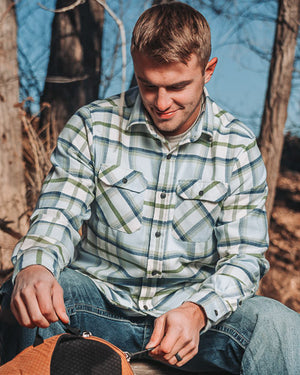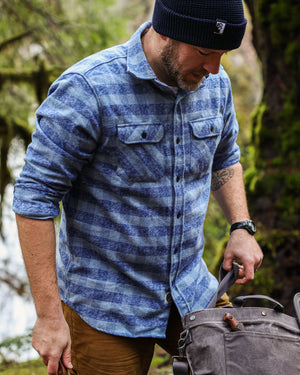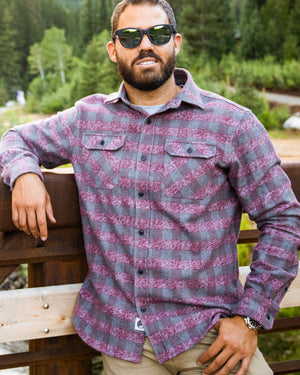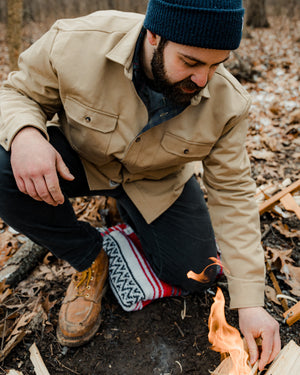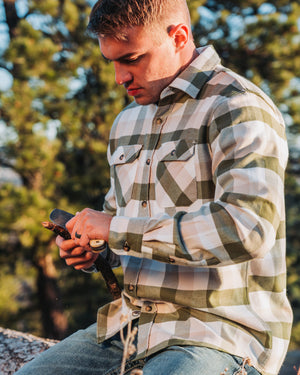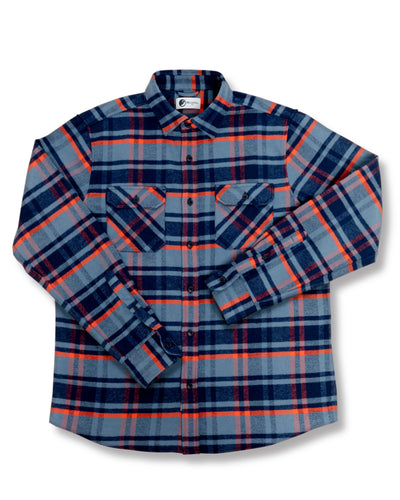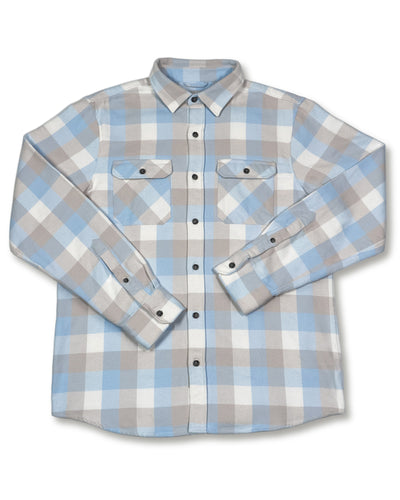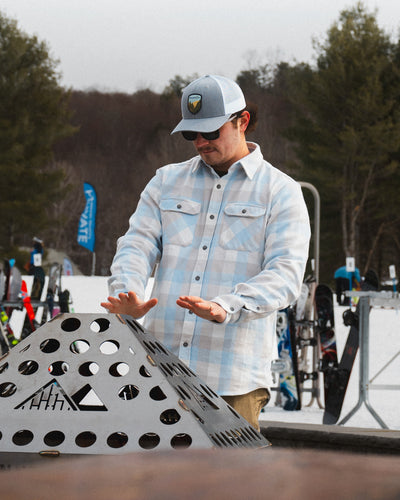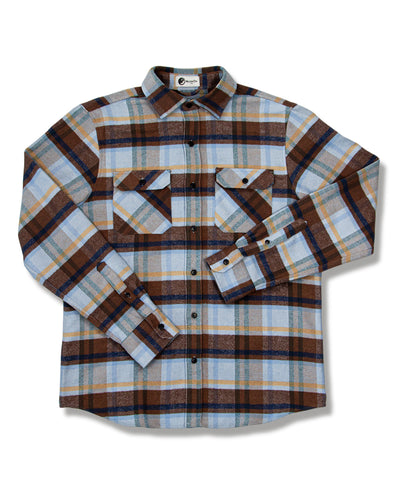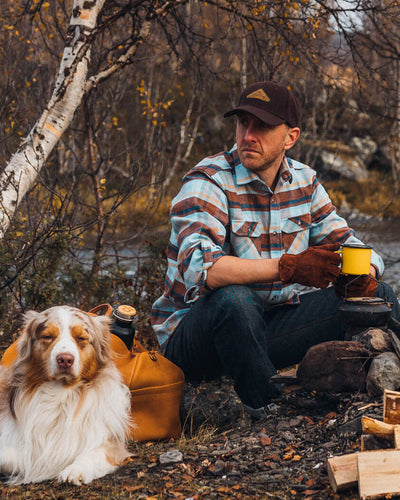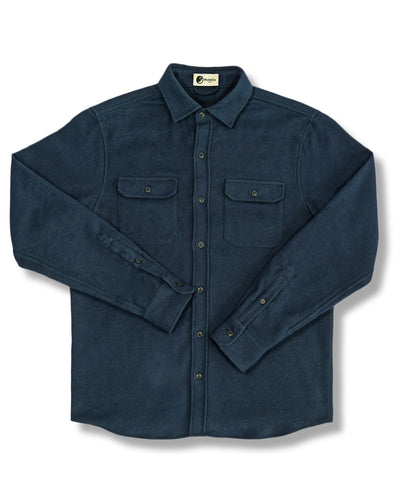The Arctic’s Smelliest Badass — Combating Seasonal Change
 Photo by Kaspar Rønningen, @kaspar_ronningen
Photo by Kaspar Rønningen, @kaspar_ronningen
In the windswept tundra of Alaska and isolated parts of the Arctic North, the muskox stands as a living symbol of endurance. These Ice Age relics endure subzero winters, thrive in short summers, and live in one of the most unforgiving environments on Earth. Here’s how they do it — and what we can learn from their rugged way of life.
Mastering the Deep Freeze
Think of the muskox as your buddy who shows up to a blizzard bonfire wearing a flannel, grilling steaks barehanded, and calling it "a little brisk out." He doesn't flinch, doesn't flake, and serves up the beef with only an 8” chef knife (no plate).
Muskoxen are built for brutal cold. Their iconic coat consists of two layers: coarse guard hairs that shed wind and snow, and a soft, ultra-insulating qiviut under layer.
This underwool is eight times warmer than sheep’s wool and softer than cashmere, helping muskoxen retain body heat in -40°F temperatures. Snow doesn’t melt on their backs — it just piles on.
Their barrel-like bodies and short legs minimize surface area, reducing heat loss. When Arctic blizzards hit, they huddle together in tight formations to conserve warmth and stand firm against the wind.
 Photo by Kaspar Rønningen, @kaspar_ronningen
Photo by Kaspar Rønningen, @kaspar_ronningen
Food is sparse during winter. Muskoxen use their hooves and strong necks to break through snow, digging for moss, lichen, and dried grasses. They conserve energy by staying mostly still, resting, chewing cud, and moving only when needed. Running ... only when absolutely necessary — basically like your buddy who claims he’s “bulking” year-round.
Spring Thaw and Summer Abundance
Much like your neighbor who’s outside in shorts the minute the temperature hits 40°F, muskoxen are quick to shake off the winter coat and make the most of warmer weather. They're the first ones grilling, even if there's still snow on the ground, they may seed their grass a month early, to their luck, the grass grows. You know the type — questionable pair of flip-flops, bluetooth speaker blasting at 10 a.m. Muskoxen emerge from winter like someone who just finished a 6-month juice cleanse and is about to fire up the grill and get down on some hot dogs.

As spring arrives, muskoxen shed their qiviut to prevent overheating. This molting process leaves them looking a bit scruffy, but it’s essential. Spring also signals calving season. Muskox calves are born ready to move, often standing and following their mothers within an hour. They stay close, often under the mother’s long coat for protection.
The landscape changes fast. Snow melts, plants bloom, and the muskoxen shift to a diet of nutrient-rich grasses, flowers, and shrubs. With long hours of daylight, they roam more widely in search of food.
 Photo by Linus Zutterlund, @linuszetterlund
Photo by Linus Zutterlund, @linuszetterlund
Herd Dynamics and Summer Rituals
Muskox herds are fluid. In winter, they form larger groups for protection. In summer, herds split into smaller family bands. As the breeding season (rut) approaches in late summer, bulls begin posturing and occasionally clash in thunderous headbutts to establish dominance. Imagine running 40mph head on into a dude who's been eyeing your girl from across the bar. It gets like that sometimes in the summer.

The muskox’s most iconic defense behavior also remains constant: when threatened, the herd forms a circle, adults facing outward, calves protected at the center. It’s an age-old tactic that still works against modern predators like wolves.
Arctic muskox herds are like the group of guys at a tailgate who instinctively form a protective ring around the cooler — alert, unbothered, and fully prepared to throw hands if someone reaches in without asking … And the muskox can crush a case of beer faster than Andre The Giant before WrestleMania ... Rule #1, leave no trace!
Built for the Arctic
In many ways, muskoxen are the ultimate no-nonsense outdoorsmen. Low drama, high durability. Not the fastest, not the flashiest — but when it’s freezing and the world’s falling apart? They’ve got it handled. It’s not pretty, but they adapt similarly to the times you show up to pickleball with no shoes and still end up winning.
Few animals remain in the Arctic year-round, but muskoxen do. Their adaptations — from fur to metabolism to social cooperation — make them one of the few large herbivores that can live year-round above the treeline.
 Photo by Kaspar Rønningen, Field Grand Flannel, Huntsman Plaid
Photo by Kaspar Rønningen, Field Grand Flannel, Huntsman Plaid
Unlike sprinters like caribou, muskoxen keep things slow and steady. Their metabolism is optimized to conserve energy in freezing temps, so they don’t waste calories when food is scarce.
These animals know the value of sticking together. From blizzard-huddle formations to the circle-of-horns defense, muskoxen are all about team tactics. Lone wolves? Not a thing in muskox land.
They don’t just survive the Arctic — they’re made for it. Their patience, toughness, and teamwork are key to enduring seasonal extremes.
From Muskox to MuskOx™
We didn’t name our brand MuskOx by accident. Like the animal, we believe in enduring the elements with quiet strength and resilience. Our heavyweight flannels are built to withstand tough conditions — whether you’re hiking through backcountry or heading out on a chilly morning.
Just as the muskox thrives through wild seasonal swings, our flannels are designed to handle whatever nature throws your way. No frills. No shortcuts. Just durable comfort, inspired by a creature that’s been getting it done for over 600,000 years.
